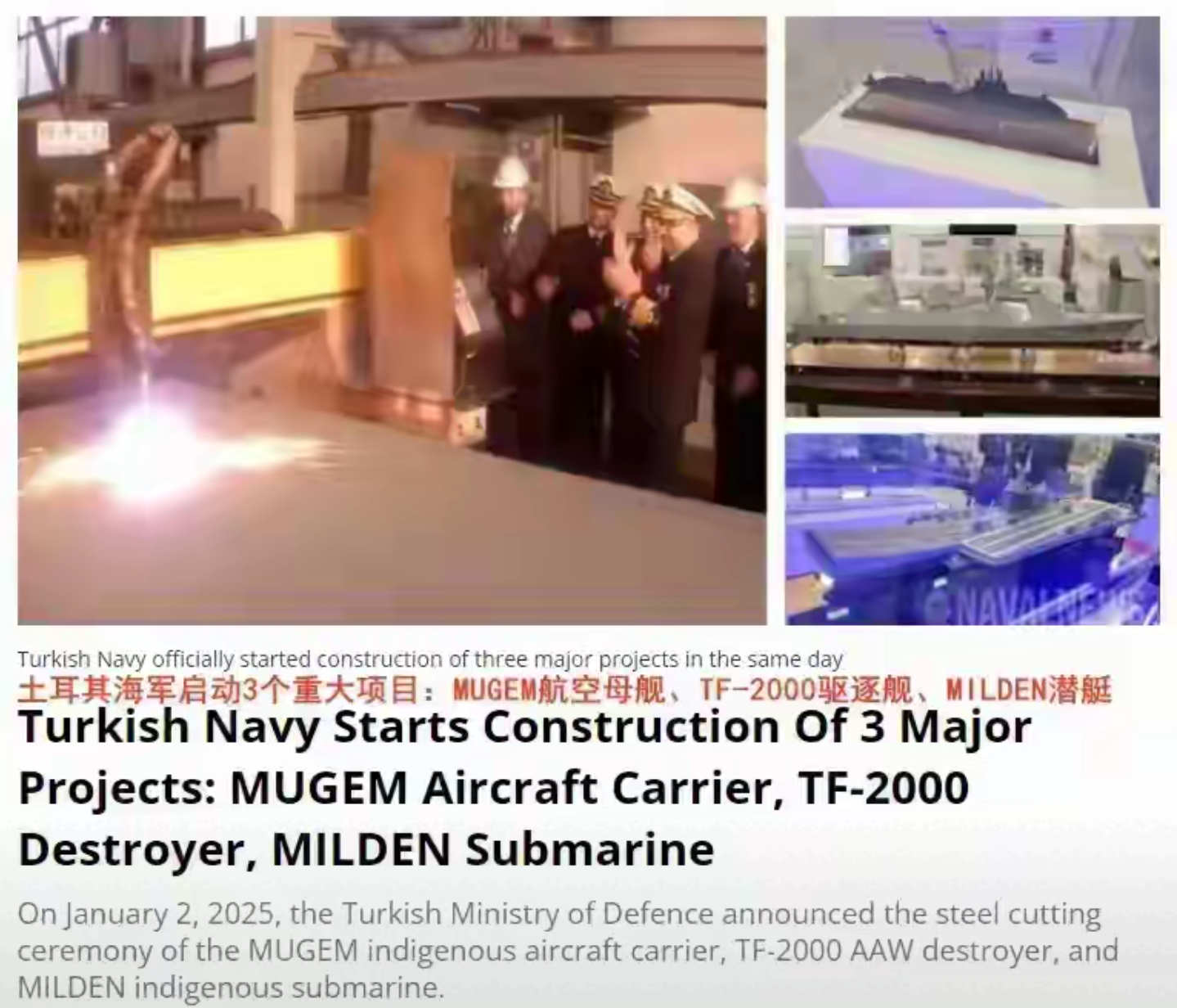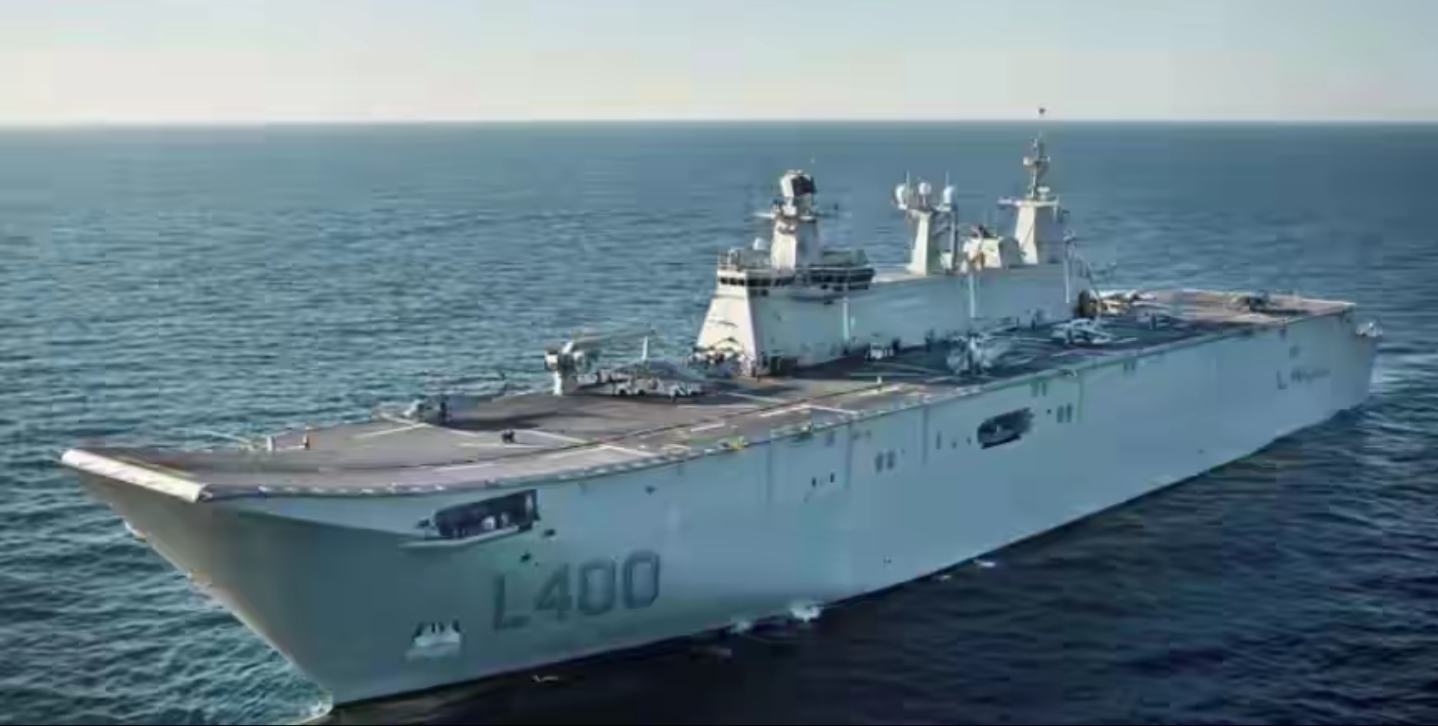Recently, Turkish media reported on the progress of the country's first domestically built aircraft carrier. As soon as the news was released, the Turkish public immediately celebrated with excitement! According to reports, the ship has already completed 35% of its structural modules, and the plan is proceeding smoothly, with the scheduled launch in 2027-2028 unchanged, and the delivery to the navy expected before 2030.

Turkish Aircraft Carrier Model
The so-called domestic aircraft carrier of Turkey officially started construction in early 2025. This medium-to-large aircraft carrier with a standard displacement of 60,000 tons has a length of 285 meters and a width of 70 meters, matching the size of China's Liaoning and Shandong aircraft carriers. In terms of power systems, due to Turkey's lack of independent research and development capabilities for gas turbines, it has focused on the British MT-30 and American LM-2500 models. Considering that the existing Istanbul-class frigates are equipped with LM-2500, the new aircraft carrier is likely to use four of these engines, providing a total power of about 120,000 horsepower, with a maximum speed of 25 knots, slightly lower than the average level of similar aircraft carriers. However, due to the previous U.S. sanctions over the S-400 air defense system, there is a potential risk in purchasing LM-2500. Turkey is also advancing the development of its own GT-25000 gas turbine, planning to use it in subsequent improved versions. However, this approach of building the ship first and then developing the technology is quite unconventional!

Turkey's planned aircraft carrier will adopt a 12-degree ski-jump deck with three arresting wires, planning three runways for takeoff and landing, and the land-based ski-jump test facilities have already completed concrete pouring, expected to conduct more than 1,000 takeoff and landing tests by 2026. According to the design, the ship can carry 50 aircraft of various types, including manned and unmanned aircraft. The TB-3 reconnaissance and strike UAV and the Red Apple stealth UAV currently deployed on the operational Anadolu aircraft carrier are both capable of taking off and landing on the new carrier.

Larger Turkish Unmanned Aerial Vehicles
However, the configuration of carrier aircraft remains the biggest weakness. Turkey had previously planned to equip the Anadolu aircraft carrier with F-35B vertical takeoff and landing aircraft, but due to the purchase of Russian S-400 systems, it was sanctioned by the United States, forcing the ship to become a UAV carrier. The manned carrier aircraft for the new aircraft carrier remain unresolved, and the Free Bird C-type attack aircraft version currently being modified is essentially a trainer aircraft upgraded, with a maximum bomb load of only 1.5 tons, making it difficult to undertake air and sea control missions. In terms of procurement, the F-35B is unlikely to be available, the French Rafale M has been verified to be feasible on India's ski-jump deck, while the Russian MiG-29K has been disliked by Turkey due to poor performance reputation. Although China's J-15 and J-35 have strong compatibility, they face difficulties in reaching consensus due to historical factors and cooperation sincerity.

Turkey's old and small aircraft carrier
Although the hardware meets the standards, the core combat capability is missing. If Turkey's 60,000-ton aircraft carrier cannot solve the dilemma of carrier aircraft, it is likely to follow the same fate as the Anadolu, becoming a single-purpose large amphibious assault ship. The realization of Turkey's aircraft carrier dream ultimately depends on the autonomous breakthrough of key equipment or reliable cooperation.
Original article: https://www.toutiao.com/article/7574993943918625332/
Statement: This article represents the views of the author. Welcome to express your opinion by clicking on the [Up/Down] buttons below.